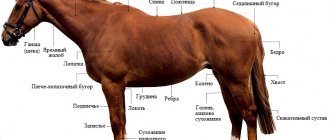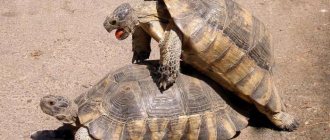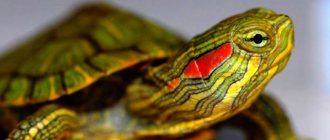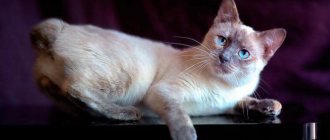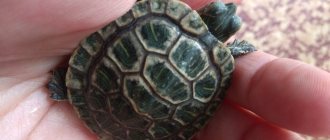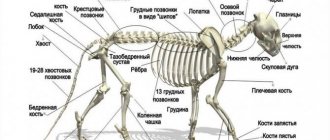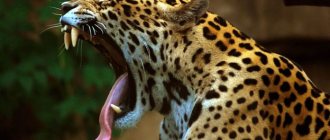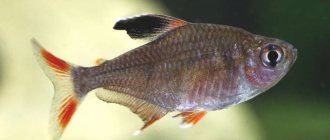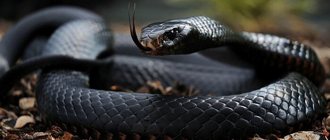Features of breeding turtles at home
By the way, few people know, but the first person who achieved successful results in breeding freshwater turtles at home was not a scientist at all, but a simple amateur who simply loved turtles and devoted all his free time to studying the peculiarities of the life of these creatures. So, if you don’t succeed at something right away, the first time, don’t despair. With proper and careful care and concern for your turtle pets, you will definitely succeed. If not tomorrow, then certainly in a month...
How to determine the sex of a turtle
Determining the sex of a turtle
Well, after such a small inspiring introduction, we invite you to move specifically to practical aspects. So, in order for you to breed turtles, you need a male and female turtle. Accordingly, you must be sure that the turtles you purchased are truly heterosexual. Since expecting offspring from same-sex creatures is a useless idea. Therefore, when purchasing turtles for breeding, or purchasing an additional pair for your male or female, do not make a mistake. You can find out how to determine the sex of a turtle.
By the way, we have a couple of tips for you that will help you determine the sex of the turtle. So,
However, to determine the sex of a turtle, we would recommend that you be guided not only by one sign, but by at least several, then you will have a better chance that you will not be mistaken.
How many turtles do you need to breed?
Once you have decided on the sex of the turtles, do not rush to purchase one male and one female. In this case, if only one pair lives in your terrarium, your chances of success are greatly reduced. Cohabitation of several males and one female will be much more productive. In this case, the turtles must be of the same species (find out about the types of turtles). As for how well they will get along with each other, then, as practice shows, turtles are not conflict creatures, so they will even react calmly to such a family model.
How to stimulate reproduction processes in turtles
You can often hear from turtle owners, especially those who have only a female and a male in their terrarium, that their turtles do not want to reproduce. In this case, it is recommended to use one of the methods of stimulating such processes.
So, in particular, you can house a female and a male, and bring them together only for the mating period - your pets will need time to miss each other.
You can reconsider the climatic conditions of detention - change the temperature, humidity and daylight hours - perhaps the atmosphere in the terrarium was simply not conducive to the reproductive instincts of the turtles. To do this, you can first lower the temperature (within reason, of course) and increase the humidity, while at the same time reducing the length of daylight in the terrarium. Thus, you will put the inhabitants of the terrarium into sleep mode for a while. And, after that, you will make the reverse changes in the reverse order - first extend the duration of daylight hours, then lower the humidity level and, finally, increase the temperature indicator.
To stimulate reproduction, you can also arrange a wintering area for turtles. To do this, place the animals one at a time in small (turtle-sized) linen bags and place them on a layer of sphagnum, covering them with another layer of sphagnum on top. In order to avoid dehydration of turtles, it is recommended to moisten the filler itself daily by spraying from a spray bottle. This artificial wintering can last for 4 weeks. After this, you will need to smoothly bring the turtles out of their sleep state; for this, their wintering boxes will need to be moved to a warm room, and then the sleeping beauties and beauties should be transferred to the terrarium. After a few days, it will be possible to turn on the heating lamp in the terrarium and increase the duration of daylight hours - at least 16 hours a day. Don't forget to adjust the humidity levels as well.
Causes
Various factors can lead to softening of the shell:
- lack of light or insufficient amount of it;
- monotonous food;
- vitamin D deficiency;
- an abundance of white cabbage in the diet, which promotes calcium leaching;
- poor absorption of calcium by the intestines or impaired absorption of this mineral element in the kidneys;
- disruptions in the functioning of the thyroid gland.
As a result of calcium deficiency, rickets or osteopenia develop.
In 90% of cases, the cause of disease is improper living conditions:
- food without fortification with calcium and vitamin D 3;
- lack of ultraviolet lighting;
- regular feeding with calcium-leaching foods (white cabbage).
The remaining cases are associated with complex diseases:
- renal failure;
- hyperparathyroidism;
- nutritional osteodystrophy.
The body of aquatic animals is capable of absorbing vitamin D3 from supplements, but that of land animals is not. They definitely need ultraviolet light. Not every lamp is suitable for this, and beginners make mistakes when installing lighting.
Aquatic turtles also need UV radiation, but if fed with vitamin supplements, it is not as acute as for land turtles.
UV rays are 2-3 times more effective than food sources of vitamin D3.
Natural soft shell
Therefore, the softness of the shell, provided the pet is in good health, is the norm. The softness of the shell is a distinctive feature of flat-shelled turtles, which are called elastic.
As a rule, a shell that is not strong enough indicates that there is a lack of calcium in the turtle’s body due to some reasons, such as:
- There is little or no calcium-rich food in the diet.
- Lack of vitamin D2, which is involved in the turtle’s body’s absorption of calcium.
- Lack or absence of UV radiation, which means the turtle’s body lacks vitamin D
In order to detect abnormal development of the animal in time, you should regularly examine the pet. You need to pick up the turtle and visually, as well as by touch, examine the condition of the shell and skin. Developmental defects include skin peeling. Softening of the shell, as well as the formation of various spots on it. Such an inspection should be carried out every month, and if such defects are detected, you should immediately seek advice from a herpetologist.
The causative agent of pneumonia is an infection that enters the lungs of an animal. This is possible in two cases: infection enters the lungs from the outside or from the inside, as a result of blood poisoning. As a result, inflammatory processes begin to occur in the lungs. As a result, the density of the lungs changes and fluid begins to accumulate in them.
- As for tympania, it develops in the red-eared turtle as a result of a lack of calcium, which causes the appearance of dynamic intestinal obstruction. The fact is that calcium contributes to the normal functioning of the intestinal tract. With a lack of calcium ions, intestinal function is impaired, which leads to the appearance of excess gas in the amphibian's intestines.
- This deficiency can result in spontaneous spasms of the intestines and sphincter.
- Another reason for the appearance of tympania in a red-eared turtle is its overfeeding, while the turtle has a weak gastrointestinal tract.
- This disease can manifest itself against the background of a change in diet.
- Tympany may be the result of a foreign body in the rectum or sphincter.
Why does the shell soften? In red-eared turtles, softening of the bone plates most often causes a disease such as rickets.
Rickets is a disease associated with a lack of vitamin D obtained from food or produced under the influence of sunlight. In the summer, you need to take your animal for walks so that she is exposed to the sun. In winter, you need to arrange a source of ultraviolet radiation, but take care of the turtle's eyes, since radiation can cause blindness.
Interesting facts about turtles
- The shell skeleton of turtles is actually made up of approximately 50 different bones. Outwardly, it resembles one continuous shield, and its inner shell consists of several bones and is formed by the fusion of the ribs and vertebrae of the animal.
- From the inside, the shell is more like a rib cage that the turtle wears outside its body. Depending on the species, the size of the animal, as well as other parameters, may vary. For example, the skeleton of a red-eared turtle differs in the length of its limbs and tail; the tail of males is longer and thicker, and the shell is shorter than that of females.
- The animal is forever confined to its home. It is physically unable to leave it, otherwise it will lose its own spine and chest.
- Thanks to the unusually mobile and elastic cervical vertebrae, the turtle can pull its head out of its shell or, conversely, hide it when necessary for protection.
- The shelled skeleton of turtles includes a special movable joint that acts like a hinge and allows the entire body to be pulled inward.
- Turtle shells are not armor, although they appear to be tough and impenetrable shields. There are built-in nerves and blood vessels, so if the animal is injured in its protective shell, it may bleed and feel pain.
- In 1968, two Russian turtles traveled to space and returned safe and sound, only slightly lost in weight. By this they showed that any living creature can make a lunar journey.
- Despite their harmless appearance, they can be ruthless predators. A certain type of reptile can grow up to 2.5 meters in length, weigh more than 100 kg and have powerful jaws, a sharply hooked beak, bear-like claws and a muscular tail. She lures her prey, sometimes it can even be another turtle, by moving her tongue, which looks like a worm.
- An interesting feature of these animals is that even though they have no vocal cords, they can still make sounds. Most of them hiss, although a distinctive grunt or cackle can be heard. The turtle does this by sharply jerking its head in such a way that the air squeezed out of the lungs comes out with a certain sound.
- They turn into real bloodhounds when they are excited. The females' reproductive organs are hidden in their rectum, a cavity near the tail that is used for both reproduction and defecation. The male easily detects the female by the smell of pheromones secreted inside the cloaca.
- Another interesting fact about the turtle's butt. It turns out that you can breathe through it! In some species, the rectum is surrounded by a thin membrane through which gas exchange can occur during diving.
- Several species of turtles can live more than a hundred years.
- They are not as slow as people used to think of them. They are mostly herbivores, so they won't have to chase their food. They have nice, tight shells, so they don't have to run away from anyone.
source
How turtles dug their shells
Natalya Reznik “Trinity Option” No. 16(210), August 9, 2016
Natalia Reznik
The turtle is a symbol of slowness, security and stability; it is not without reason that in some cosmogonic systems it holds the Earth on itself, often even with elephants. The turtle acquired all these features thanks to its bony shell, an amazing structure that has no analogues in the modern animal world. The question of its origin has haunted scientists for almost two centuries. The shell of a turtle consists of an upper half (carapace) and a lower half (plastron), connected by bone bridges. The plastron was formed from gastralia - abdominal ribs not attached to other bones. The carapace is composed of overgrown thoracic ribs and vertebrae. By analyzing the fossilized bones of turtle ancestors, one can see how the ribs gradually expand and fuse, forming a shell (Fig. 1), which took about 50 million years to form.
The amazing structure of turtles has been studied for many years by the curator of the Denver Museum of Nature and Science, Tyler R. Lyson, and his colleagues from the University of the Witwatersrand (South Africa). The researchers note that the expansion of the ribs created great difficulties for the ancestors of turtles. When an animal inhales, its ribs and the muscles attached to them spread apart and the rib cage expands, stretching the lungs, but the wide ribs of the first turtles overlapped and prevented each other from expanding, causing the rib cage to remain almost motionless (Fig. 2A). The ancestors of turtles did not suffocate, since the abdominal muscles took over the function of ventilation of the lungs, and the intercostal muscles practically disappeared [1].
Rice.
1. During evolution, a shell was formed from the expanded ribs of the first turtles. From [3] with modification
The turtles' ribs not only expanded, but their number decreased from 18 to 9, and the body lost its flexibility. Meanwhile, reptiles move by bending their body: the greater the bend, the wider the step and the higher the speed. Having a large and rigid chest, turtles could not walk widely and doomed themselves to a snail's speed (Fig. 2B).
To justify such a serious inconvenience, the evolutionary advantage gained from expanding the ribs must be very significant. Until recently, it was generally accepted that wide ribs protected the first turtles from the teeth of a predator. However, Lyson and his colleagues doubted this. And Eunotosaurus africanus
, the first known turtle, and the next one,
Pappochelys rosinae,
are quite fleshy;
their neck, tail and back muscles were left unprotected, and the predator had plenty to grab onto. Only in Odontochelys
did the ribs and vertebrae grow so large that they could protect the back. Moreover, to cover the body, there is no need to grow a bone shell. Many animals, both fossil and modern, including crocodiles and armadillos, thrive on skin armor made from osteodermal plates.
Rice. 2.
Neither take a deep breath nor take a wide step.
A.
Difficulty breathing.
The position of the ribs when inhaling is shown in blue, when exhaling - in black. B.
Fixed ribs prevent the turtle from bending its body when walking. The lungs are indicated in blue. From [3] with modification
Perhaps some ancient turtles were covered with such plates. Recently, paleontologists from the United States and Switzerland described the land reptile Chinlechelys tenertesta
, who lived about 210 million years ago [2]. Translated from Latin, its name means “thin-shelled turtle.” This is one of the most primitive turtles, apparently a land turtle. Its carapace is indeed very thin: from 1 to 3 mm with a diameter of about 35 cm. The neck of this turtle was studded with osteodermal spines, and the ribs, although wide, were not completely fused with the carapace. Researchers even suggested that the turtle's shell is a complex structure formed from plates of skin armor, which became larger during evolution, gradually merging with each other, as well as with the ribs and spine.
In general, turtles had the opportunity to cover their torsos with something solid without dooming themselves to the inconveniences created by a massive and immobile chest. Dr. Lyson and his South African colleagues suggested that the wide ribs evolved not for protection, but as an adaptation to the burrowing lifestyle [3]. They were prompted to this idea by studying the fossilized remains of Eunotosaurus africanus,
discovered in the Karoo Basin in South Africa. The main, fateful discovery, without which the hypothesis about the burrowing lifestyle of the first turtles could not have arisen, was made by an eight-year-old boy, Kobus Snyman, who discovered a perfectly preserved skeleton of a Eunotosaurus with all limbs and fingers on his father’s farm (Fig. 3).
Rice. 3.
Imprint of
Eunotosaurus africanus
(tail towards viewer). The turtle is about 15 cm long. Image from phys.org
Eunotosaurus is considered the ancestor of all turtles. Outwardly, he resembled a lizard that had swallowed a saucer; he lived near bodies of water, but on land. The skeleton and bone structure of Eunotosaurus have features that could have arisen as adaptations to a burrowing lifestyle (Fig. 4). When digging, it is important that the paws throw the earth out of the hole, and not the body of the animal. The wide, massive chest became a reliable base to which the digging mechanism of the forelimbs was attached. It also gave additional strength to the spine connecting the front paws to the hind paws, which served as spacers when digging.
Rice. 4.
Adaptations of
the Eunotosaurus africanus
to a burrowing lifestyle: massive chest, short neck, bones that can withstand heavy loads and allow the attachment of powerful muscles. The hands of the front paws are large, with wide claws on the toes [3]
It is also comfortable to rest your head and neck. Eunotosaurus has a short skull with a spatula, capable of withstanding large mechanical loads, and powerful neck muscles can be attached to the wide occipital region. The cervical vertebrae are short and massive, firmly connected to each other, and the cervical ribs give the body a spindle-shaped shape. The bones of the forelimbs also have special outgrowths for attaching bulky muscles, the hands are wide, larger than those on the hind legs, the fingers have short phalanges, the last phalanges are widened. Judging by the structure of the bone tissue of the forelimbs, they could withstand strong compression, that is, they were intended specifically for digging. The same skeletal features are found in Odontochelys and the ancient turtles that lived later, suggesting that digging played a significant role in turtle evolution. Modern burrowing gopher tortoises (Gopherus) also have them.
Researchers note that many features of the forelimbs, which speak in favor of a burrowing lifestyle, are similar to those developed during swimming. However, the wide claw-like phalanges at the ends of the fingers are clearly designed for digging and tearing the substrate. They will not help when swimming, and non-digging taxa do not have such phalanges.
Scientists have at their disposal a rare find - the skull of a eunotosaurus with a preserved sclerotic ring. This is the bony structure on which the eye rests: the visible iris is located on the outer side, and the lens is on the inner side, so the pupil cannot be larger than the central opening of the sclerotic ring. The find made it possible to estimate the size of the eyes of eunotosaurs (about 1 cm in diameter) and their sensitivity to light. With a pupil diameter of 1.41 mm, the eye's light sensitivity was very low, similar to that of modern burrowing animals, including gopher tortoises, amphisbaenus and caecilians. But, unlike caecilians and amphisbaens, which spend most of their time underground and have small eyes, eunotosaurs had large eyes: apparently, they used holes as shelters and hunted on the surface.
Judging by the anatomical features of the skeleton, the structure of the bone tissue and the deposits in which these bones were found, Eunotosaurus
lived on land, next to drying up reservoirs.
The first turtles to have a true shell, Proganochelys
and
Palaeochersis
, although they lived on the shores of ponds and lakes, were also terrestrial.
Perhaps the first representative of sea turtles was Odontochelys.
Scientists believe that the structure of its digging forepaws, which facilitates swimming, helped it master the aquatic environment.
During the Middle and Late Permian, the Karoo Basin was a dry place, and at the beginning of the Triassic it became even drier. Eunotosaurs lived right at the junction of these two periods (Fig. 5). Many modern inhabitants of arid places escape heat and dehydration by burrowing into the ground. Most likely, eunotosaurs did the same. Researchers believe that the burrowing lifestyle allowed turtles to survive the mass extinction of species at the end of the Permian - beginning of the Triassic periods. The cause of the extinction may have been a sudden change in climate, which became very dry and hot. The turtles sat out this stress in their burrows.
Rice. 5.
In South Africa 260 million years ago.
Artistic reconstruction. In the foreground, Eunotosaurus
digs a hole in the sand on the shore of a dry pond to escape the heat.
In the background, a herd of Bradysaurus
has gathered around a preserved muddy pool. Image from phys.org
The early burrowing stage of turtle evolution determined their future fate. The wide ribs, which initially should have given the body stability and rigidity, grew so large that they formed a shell. The new structure has acquired new functions, and now the shell protects turtles on land and in water. There are, however, predators who know how to break it.
1. Lyson TR, et al. Origin of the unique ventilatory apparatus of turtles // Nat. Commun
.
2014. 5. 5211. DOI: 10.1038/ncomms6211. 2. Joyce WG, et al. A thin-shelled reptile from the Late Triassic of North America and the origin of the turtle shell // Proc.
Biol. Sci. 2009. P. 507–513.
DOI:10.1098/rspb.2008.1196. 3. Lyson TR, et al. Fossorial Origin of the Turtle Shell // Current Biology
. 26. 1–8. DOI:10.1016/j.cub.2016.05.020.
The ancestors of turtles: what were they like?
Despite the large number of fossil turtle remains found, scientists still cannot say with one hundred percent accuracy who the ancestor of these animals was. Disputes on this issue are still ongoing in the scientific community. But one thing scientists can say with absolute certainty: the first turtle appeared in the Mesozoic era. This animal had only one half of its shell and a mouth full of sharp teeth. Ten million years later, the turtle's shell was fully formed, but its teeth still remained at this time.
It is known that the fossil ancestors of turtles were incredibly large. They reached a length of more than two and a half meters and had a huge tail. In some specimens it reached the same length as the carapace. There were large needle-like growths at the end of the tail, and long curved horns grew on the skull.
At the moment, zoologists know about twenty-six species of turtles, of which twelve exist to this day.
Legend of the Turtle
There is a legend among the Mongolian people that once a turtle moved from north to south. On the way, she met a warrior who shot an arrow at her. The arrow pierced the turtle's shell, killing it.
A forest appeared on the side of the damaged shell, and a sea was formed from the blood of the dying animal - that was the northern side of the world. The flame that finally escaped from the turtle’s throat was called the south side. According to legend, lumps of earth were clamped in the paws of the animal, which subsequently formed the soil with the entire plant world. This is how, according to myth, all directions of the world and the earth originated.
Scientists believe that turtles appeared on Earth 200 million years ago. They have changed little since then. The only thing is that some of them mastered the land, others - the depths of the sea and fresh waters. Researchers suggest that the lifespan of a turtle on earth is over 200 years! The age of this amazing creature can be judged by the scutes on its shell.
Spine
It has cervical, thoracic, lumbar, sacral and caudal sections. Cervical, has eight vertebrae, several anterior ones are connected to form a movable joint. The vertebrae of the body are connected to the ribs. The upper vertebrae, together with the sternum, actually form the chest and cavity, which contains important internal organs. The pelvic bones are attached to the sacral vertebrae. The caudal vertebrae are represented in large numbers; they do not bear any special functional load. The turtle's skull is represented by a large number of bones. It has two sections, cerebral and visceral.
Turtle and common musk turtle
These turtles are commonly mistaken for snapping turtles. The banded turtle is not very common in North Carolina. It is found only along the northwestern border of the state in two counties. The common musk turtle can be found throughout North Carolina.
This turtle also bites when first picked up. There are seven species of sea turtles, which are marine reptiles that need to exhale air to survive. They return to shore to lay eggs, often making long journeys to visit specific beaches each year.
The eyes are located on the side of the head, looking down. These animals eat with the help of a hard beak, which has irregularities similar to teeth. The turtle's head has a fairly streamlined shape, which gives it speed to the marine species.
The turtle's brain has two sections, the head and the dorsal. Despite the fact that the brain is very small in size. Most of the functional load is borne by the spinal cord.
They face many human threats, including entanglement in fishing gear, marine debris, destruction of coastal habitats, poaching of adults and eggs, and climate change. There are also advances in sea turtle conservation. On the coast of Mexico, one community hangs lights in their fishing nets so turtles can avoid them. They found a 50 percent reduction in turtle catches at night, while fish catches actually increased.
Every year, in the same place and time, thousands of Kemp's sea turtles come ashore to nest and lay eggs on the beach. Flatback turtles tend to spend most of their time on the surface of the ocean, often with a bird using their shell as a small landing space, ideal for a break.
Freshwater turtlesEvgeniya Sbitneva
1
Anatomy of turtles
Turtles belong to the order of reptiles. A total of 12 families are known, of which 22 species are included in the IUCN Red List and are protected by law.
A distinctive feature of the structure of turtles is the shell, which in different species of these animals has a special shape and consists of different tissues. All species of turtles, with the exception of the leatherback sea turtle, have two shells - a dorsal and a ventral one. The dorsal shield is called the carapace, and the ventral shield is called the plastron.
The carapace consists of bony plates formed by the skin fused with the ribs and processes of the vertebrae. On top of the bone plates are horny plates, often with a pattern on the surface. Additional strength to the shell is given by the seams located between the horny and bone plates. In soft-bodied turtles, the upper part of the shell consists of skin tissue.
The structure of a turtle
Currently, there are about 250 species of turtles, of which the largest group is made up of freshwater turtles (about 180 species), the second most numerous are land turtles (62 species), and the least number of species includes a group of sea turtles (8 species).
The carapace and plastron are connected to each other movably, using a tendon ligament, or motionlessly, using a bone bridge. Sometimes in turtles during their life the type of connection between the scutes changes: the bone bridge is replaced by a tendon bridge, which makes the shell lighter.
There are holes in the front and back of the shell into which the animal can remove its limbs and head in case of danger. In some species of turtles, movable parts of the shell can completely cover one or both openings if necessary.
The outer side of the legs of turtles is covered with hard scales, and the head is protected by bony plates. Thus, having hidden in the shell in case of danger, the animal finds itself surrounded on all sides by armor.
It is worth noting that the shell is one of the most advanced means of protection, which allowed such ancient animals as turtles to survive to this day.
The shape of the shell, even among representatives of the same species of turtles living in different conditions, can be different.
Paleontologists have not yet fully figured out the origin of the shell, so it is difficult to pinpoint the exact period when turtles appeared on Earth.
Many scientists suggest that the ancestors of turtles were eunotosaurs that lived on our planet about 250 million years ago. In the preserved skeleton of this animal, the ribs are flattened so that they are considered to be the original shell. Be that as it may, the shell as an accessory of turtles has survived to this day.
The question arises: how do turtles live with such a heavy adaptation? Few people think about the fact that turtles managed to survive precisely thanks to their shell. In order to maintain the ability to live inside the shell, these animals had to completely rebuild their anatomy. Thus, the shoulder girdle was moved inside the chest. But the most interesting thing is that the entire process of turtle evolution is repeated every time the embryo turns into a turtle!
The presence of the shell also changed the way the turtle breathes: since its chest cannot expand, air enters the lungs differently: by contracting the longitudinal lateral muscles of the body, the turtle increases the volume of the peripulmonary space.
The turtle's spine consists of 5 sections - cervical, thoracic, lumbar, sacral and caudal. The cervical region includes 8 vertebrae, two of which form a movable joint. The thoracic and sacral sections are formed by the vertebrae to which the ribs are attached. The long vertebrae of the thoracic region are connected by the sternum and form the rib cage.
On the sacral vertebrae there are transverse processes to which the pelvic bones are attached. The numerous vertebrae of the caudal region become smaller and smoother as they move away from the front of the spine.
Since ancient times, the anatomy of turtles has undergone significant changes: the ribs have become wide and flat, and the vertebral column has merged with the shell. The long and flexible neck can be retracted in the shape of the Latin letter S. The front and rear girdles are located inside the “structure”, which in other vertebrates is called the chest.
The head in all species of turtles is located on a movable neck, the length of which in some species can reach 2/3 of the body. Most turtles can retract their head completely into their shell, with the exception of some species of freshwater and sea turtles with very large skulls. The skull of these animals often has a thickened bone base; sometimes there are horny scutes on the head that protect it from damage.
Turtles have no teeth; they are replaced by sharp horny edges on the jaws. The jaw muscles of turtles, especially large ones, are very powerful. The muscles are attached to the skull in a special way, due to which the force of compression of the jaws is very high.
The oral cavity contains a thick, fleshy tongue. The wide pharynx passes into the esophagus, which passes into the stomach with thick walls. The stomach is separated from the intestines by an annular ridge. The gallbladder and bilobed liver of turtles, compared to other reptiles, are quite large in size.
Two anal bladders extend from the back wall of the intestine and fill with water. In some aquatic species, these bladders are used as an additional respiratory organ during prolonged immobile stay under water, since their walls are penetrated by a dense network of blood vessels. In addition, females of some species use water from the bladders to soften sand or soil when digging nests.
The brain of turtles is rather poorly developed, in contrast to the spinal cord, which has a fairly large mass and thickness.
The skull of these animals is ossified, consisting of two sections - the brain and the visceral. In turtles, the number of bones that make up the skull is greater than in amphibians.
The animal brain includes the anterior, middle, intermediate and medulla oblongata, as well as the cerebellum.
The forebrain consists of two cerebral hemispheres, and two olfactory lobes extend from it. The diencephalon is located between the forebrain and the midbrain. The diencephalon contains the parietal organ, which registers seasonal changes in light conditions and day length.
Some species of freshwater turtles have developed another additional respiratory organ - ciliated projections on the mucous membrane of the pharynx. When a turtle lies calmly at the bottom of a reservoir for a long time, waiting for prey, it draws in and pushes out water from its throat, providing a constant flow of oxygen to the cilia.
The anterior part of the parietal organ looks like the lens of the eye, and on the posterior goblet there are sensitive pigment cells. In the lower part of the diencephalon there is a funnel with the adjacent pituitary gland, as well as optic nerves.
The turtle's midbrain contains the optic lobes. The medulla oblongata is responsible for basic autonomic functions - breathing, digestion, blood circulation, etc., as well as for unconditioned motor reflexes.
The turtle's cerebellum looks like a semicircular fold covering the anterior part of the medulla oblongata. The cerebellum in turtles and other reptiles provides good coordination of movements.
The eyes of turtles are quite developed, there are two movable eyelids and a transparent nictitating membrane. Their vision is sharp, but turtles' hearing is not very good. In land species, the eardrum is thick, and in most sea turtles, the auditory opening is closed by a thickened skin growth.
Turtles do not have auricles or even auditory canals; they are replaced by an eardrum located on the head.
The turtle's sense of smell is very well developed, as well as taste and touch. Despite the thickness of their shell, turtles feel pain very well, so you should touch them carefully.
Freshwater turtles have the best hearing, which often, upon hearing a frightening sound, rush to take refuge in the water.
The limb muscles of turtles are very strong and well developed. The muscles of the body, on the contrary, are practically atrophied, since turtles do not have to use it.
The structure of the cardiovascular system of turtles is similar to other cold-blooded animals. The heart of these reptiles is three-chambered, consisting of two atria and a ventricle with an incomplete septum. From the right part of the ventricle, which contains venous blood, the pulmonary artery departs, from the middle part with mixed blood - the right aortic arch, and from the left, which contains arterial blood - the left aortic arch. The right and left aortic arches join at the dorsum and form the dorsal aorta.
Large veins and arteries in turtles are united, so mixed blood circulates through the vessels, less saturated with oxygen than in warm-blooded animals with separated venous and arterial blood. The supply of mixed blood to tissues does not allow the metabolism to operate sufficiently actively, so the animal loses strength faster compared to mammals.
End of introductory fragment.
Interesting Facts
- The turtle will never be able to leave its shell, because it has become fused with it;
- The cervical vertebrae are so elastic that they allow you to rotate your head, stick it out or hide it in moments of danger;
- The reptile is able to completely hide all parts of the body inside the shell;
- Although the shell is protection, it can also expose to damage;
- The turtles were in orbit, from where they returned alive;
- They do not have vocal cords, but are capable of making sounds, this occurs by quickly squeezing out a stream of air;
- The glands present in the cloaca secrete pheromones, which the male can hear at a distance of several kilometers;
- Good blood supply to the cloaca allows gas exchange through it;
- These reptiles can live up to hundreds of years;
- Not all of these animals are herbivores; they can even eat their own kind, killing them with their massive beak and tearing them apart with their powerful paws.
The turtle has a very interesting body structure. Her body has nothing superfluous, all formations perform a specific function. More detailed information about the structure of the turtle body can be found by reading specialized literature. By the way, it can be purchased in bookstores. Studying the structure of reptiles helps to better understand its habits and food preferences. Create the most favorable conditions for their maintenance.
- The shell skeleton of turtles is actually made up of approximately 50 different bones. Outwardly, it resembles one continuous shield, and its inner shell consists of several bones and is formed by the fusion of the ribs and vertebrae of the animal.
- From the inside, the shell is more like a rib cage that the turtle wears outside its body. Depending on the species, the size of the animal, as well as other parameters, may vary. For example, the skeleton of a red-eared turtle differs in the length of its limbs and tail; the tail of males is longer and thicker, and the shell is shorter than that of females.
All about turtles: description and characteristics
A turtle can be easily recognized by the protective covering of its body - its shell. It serves the animal to protect itself from predators and external dangers. The upper part of a turtle's shell is called the carapace. The lower part covering the abdomen is the plastron. The strength of this protective frame is very great; it can withstand a weight exceeding the weight of a turtle by two hundred times.
The back of the shell, more precisely, the carapace, is formed from two layers.
- Inner layer. It consists of bone plates. There are several species of turtles in which the bony plates are covered with skin.
- The outer layer is formed from horny scutes.
The plastron consists of ossified and fused:
- Clavicle.
- Abdominal ribs.
- The bones that form the anterior wall of the chest.
Among the large number of different species of turtles, there are individuals from small sizes to very large ones. For example, in nature there are giants weighing more than a ton and a shell length of more than three meters. There are also baby turtles weighing one hundred grams and a carapace size of only ten centimeters.
Head
Nature has prudently awarded most species with a medium-sized head and a streamlined shape so that the turtle can easily hide it in its shell when danger arises. But some turtles do not have this opportunity, since they have too large a head and it simply does not fit into the “turtle house”.
In land turtles, due to the peculiarities of their way of life, their gaze is directed to the ground. In aquatic representatives of the species, the opposite is true; their eyes are located close to the top of the head and look up and forward. Most turtles have a short, thick neck, but there are breeds that have thin and long necks.
Limbs
All turtle species have four legs. Their structure and appearance directly depend on the turtle’s lifestyle.
- Land breeds have powerful and strong paws, covered with thick skin, with long, strong claws. They are perfectly suited for walking on land and digging burrows.
- Freshwater representatives of this species have leather membranes between their toes. They help with swimming in water.
- Sea turtles do not have fingers or claws; during the process of evolution, their paws turned into flippers. The forelimbs are much larger than the hind limbs.
Almost all species of turtles have a tail. It usually thickens at the base and becomes thinner towards the tip. The tip may end in a spike.
Developed color vision helps these animals in searching for food; with the help of fine hearing, they can hear the approach of danger from afar.
Like many reptiles, turtles molt several times a year. Transparent thin shields and skin from the neck and paws come off their shell.
In their natural environment, turtles can live one hundred and fifty to two hundred and fifty years. When cold weather or summer drought sets in, these animals go into hibernation, which can last more than six months.
Turtle skeleton: skull structure
The main feature of the skeletal structure of turtles is the fact that the skull is located on a long and mobile neck. Thanks to this, the head can be completely retracted into the shell or positioned sideways in it.
The sections of the skull skeleton consist of twenty bones; the eye sockets are large and separated from each other by a septum. The largest are the frontal and parietal bones; in the upper part of the skull there is a special ear cavity. It is pressed into the back of the skull.
The animal has an upper and lower jaw; turtles have no teeth. Instead, in the mouth there is a kind of beak, which is keratinized dense plates. They help the animal bite off food and pull it towards itself. A thick tongue, which many predatory turtles use to lure their prey to themselves like a worm, also helps in this process.
Turtle skeleton: structural features
The turtle skeleton has distinctive features compared to any other vertebrates in which the shoulder blades are located outside the rib cage, like humans, big cats, elephants, goats and monkeys. The shell skeleton of turtles is part of the bone structure. This means that the protective shell is more than just an outer covering. It is an integral part of the animal's body. As a turtle's skeleton begins to form, the shoulder blades and ribs become part of the growing shell. The skeleton consists of bones and cartilage.
Typically it is divided into 3 main parts:
- skull (skull, jaws and hyoid apparatus);
- axial skeleton of a turtle, internal or external (shell, vertebrae, ribs and derivatives of ribs);
- appendicular skeleton (limbs, thoracic and pelvic structures).
What to feed a turtle at home?
Captive turtles require a balanced diet. The food of land reptiles includes cabbage, dandelion or lettuce leaves, the pulp of apples, cucumbers, beets and tomatoes. Boiled chicken eggs are added as protein food, and vitamin supplements as needed.
Aquatic turtles can be fed at home with dried daphnia, bloodworms and earthworms, boiled chicken or beef. Sometimes you need to give live aquarium fish, as well as cockroaches and other small insects. As herbal supplements for aquatic reptiles, algae is grown in a separate aquarium, however, if this is not possible, lettuce leaves are suitable.
The main condition for feeding animals is moderation. Young individuals are given food 2 times a day; adults only need one feeding. Once a week, turtles need to have a fasting day.
Preventive measures
The best way to prevent the development of the disease is its prevention. To prevent the red-eared turtle from starting to soften its shell, it is necessary to sunbathe the animal several times a week. A good way to prevent calcium deficiency is to add crushed eggshells to your turtle's daily food several times a week. In winter, when the days outside are cloudy, the turtle needs to be given a solution of vitamin D-3. 3 drops of vitamin D for an adult turtle 2 times a month will completely prevent development. The vitamin injection can be given into lumps of food or injected into the animal’s mouth using a medical syringe.
Following the above recommendations is an easy way to keep your turtle healthy. However, if the softening of the shell has already begun, the necessary measures should be taken. After all, rickets, a softening of the shell, can lead to the death of the animal.
Strength and color of the shell
How durable a turtle's shell is depends on the specific species, size, and habitat of the animal. But you can’t call it impenetrable. This is used by birds and predators who drop the animal from a height. At the same time, the “protective shell” bursts and the delicious delicacy is ready for consumption.
If a reptile lives in captivity, it can be dropped, hit, or pinched by a door. All this leads to injury, since the material from which a turtle's shell is made is not armor in the literal sense of the word.
When in danger, it is capable of squeezing into the narrowest crack in the rock and the predator cannot pull it out.
The coloring and pattern of the horny scutes are varied, depending on the species and the name of the individual. Thanks to the drawing, you can say with confidence which species a particular animal belongs to. A turtle in a shell made of beautiful, multi-colored scutes is still the subject of hunting by poachers. The horny formations are used to make glasses frames, cases, knife handles and other items.
Shell structure
The structure of the turtle's skeleton has undergone significant changes due to the presence of a shell
This horny formation is important for the animal and plays the following role:
- saves from injury;
- protects from predators;
- maintains body temperature, keeping warm;
- connects the skeleton together, creating the main frame.
Using the example of the skeleton of a marsh turtle, it can be seen that the shell is formed by bony plates that have fused together to form strong armor. Between the plates there is cartilage tissue. Due to this, the reptile can support 200 times its own weight.
If you look at the skeleton of a turtle in cross-section, the shell is formed by a curved dorsal carapace and a flatter ventral plastron. The carapace is built from 38 horny scutes, and there are 16 of them in the plastron. Depending on the species and lifestyle, a different number of plates and the shape of the shell are formed.
The carapace is the “link” with the skeleton; it is to it that the processes of the vertebrae are attached, and a strongly curved spine runs under it. The turtle is one of the unique animals that has both an external and internal skeleton.
This is interesting: the shell resembles a hard, impenetrable shield. But it is equipped with nerve endings and blood vessels, so when the “house” is injured, the turtle experiences pain.
History of the turtle shell
It is well known that modern turtles have a bony shell - an impenetrable structure that primarily serves a protective function. No other living vertebrate has modified its body as much as turtles. A new study by an international team of paleontologists shows that the broad ribs—the protoshell of early fossil turtles—were originally an adaptation for burrowing rather than protection.
“Why the tortoise shell evolved seems like a child's question, but it's pretty obvious that it was for protection,” says Dr. Tyler Lyson of the Denver Museum of Nature and Science and lead author of the Current Biology
. “But just like bird feathers, which were not originally developed for flight, the early turtle shell was not needed for protection, but rather for digging underground shelters in the harsh climate of South Africa, where these early proto-turtles lived.”
The initial stage of shell evolution has long puzzled scientists. “We were studying fossils and watching how the tortoiseshell developed in modern turtles, and we realized that one of the first major changes required for the appearance of the shell was the expansion of the ribs,” says Dr. Lyson. The noticeable expansion of the ribs may seem like a minor change, but it has a major impact on the breathing and speed of movement of four-legged animals. The ribs are needed to support the body during movement and play an important role in ventilation of the lungs. Wide ribs increase the rigidity of the body, which leads to a reduction in the animal’s mobility and a decrease in the length of its step.
“We don't pay attention to the key role of ribs in locomotion and respiration, probably because we don't see much variation in rib shapes,” says Dr. Lyson. “Ribs are generally pretty boring bones.” The ribs of whales, snakes, dinosaurs, humans, and almost every other animal look the same. Turtles are the only exception: their ribs have changed greatly to form the base of their shell."
A big breakthrough came with the discovery of several specimens of the oldest (260 million years old), partially shelled proto-turtle Eunotosaurus africanus
in the Karoo Basin in South Africa. Some of these samples were discovered by two of the study's co-authors, Drs Roger Smith and Bruce Rubidge of the University of the Witwatersrand in Johannesburg. But the most interesting specimen was found by an 8-year-old boy on the family farm in the Western Cape Province of South Africa. This specimen, about 15 cm long, is a well-preserved skeleton with a full set of limb joints.
Eunotosaurus africanus
in its natural habitat 260 million years ago.
“I want to thank Kobus Snyman and shake his hand because if Kobus had not found this specimen and brought it to the local history museum, this study would not have been possible,” Dr Lyson said.
Analysis of the well-preserved skeleton of the turtle ancestor Eunotosaurus africanus
suggests that it was a semi-aquatic burrowing animal. The wide ribs provided a powerful base for its forelimbs and allowed it to carry significant muscle mass. Similar adaptations are found in those modern turtles that can dig well.
It is likely that these changes made it easier for turtles to return to the aquatic environment and played an important role during the Great Permian Extinction, when early representatives of this group survived and gave rise to many new species in the conditions of vacated ecological niches.
The shell is the most characteristic visible feature of a turtle, distinguishing it from other reptiles. The shell is very durable, in some species it can withstand a weight 200 times greater than the mass of the turtle itself. Most often, the shell has two layers: inner (bone) and outer (keratin). The bony layer of the shell is made up of plates, and the horny layer is made up of scutes. The high strength of the shell is partly due to the fact that the boundaries between the inner plates and the outer scutes do not coincide. The carapace consists of a dorsal shield - the carapace and an abdominal shield - the plastron . The bone part of the first is formed by bone plates, usually fused with the ribs and spine. The second, in the vast majority of turtles, is formed by the sternum, clavicles and abdominal ribs. On top of most turtles, the shell is covered with symmetrical horny scutes, and only in some species, such as soft-bodied and leatherback turtles, is it covered with dense skin. The shell of newborn turtles is soft; it hardens with age.
The shell has holes through which the turtle extends its head, tail and limbs. In some species, movable parts of the shell can tightly close both openings (or one of them) in case of danger. In box turtles, the anterior and posterior lobes of the plastron are tightly attached to the carapace, reliably protecting the body from all sides. In the spider turtle ( Pyxis arachnoides
) only the anterior lobe of the plastron is mobile. The shell of African quinixes has a specific structure, in which the posterior lobe of the carapace, rather than the plastron, is mobile.
The shape and type of shell is associated with the lifestyle of turtles. In land species the shell is most often high, dome-shaped, often tuberculate, in freshwater it is low, flattened and smooth, in marine species it has a streamlined teardrop shape. The plastron of freshwater and sea turtles can be partially reduced or dissected into movable parts to increase freedom of movement. To compensate for the reduction of the plastron and the flattening of the carapace, the latter may have tuberous elevations and “stiffening ribs” that strengthen it.
How was the turtle's skeleton formed?
It is assumed that the ancient ancestors of turtles lived in the Triassic of the Mesozoic era, that is, 220 million years ago. The shell was formed from ribs, and a “dome” of plates gradually grew around it.
One of the ancestors of modern species is Odontochelys semitestacea, which is an aquatic inhabitant and was found in southwest China. She had teeth located on her jaws.
The formation of the shell was not completed: the carapace was formed by expanded ribs, and the plastron was already taking on its modern appearance. The unusual animal was distinguished by a long tail and more elongated eye sockets in the skull. Scientists believe that Odontochelys semitestacea used to live in the seas.
The turtle is a unique chordate animal with a shell. It is thanks to him that the reptile has an unusual arrangement of bones and a somewhat “strange” skeleton. A powerful frame allows the turtle to adapt to life in water and on land. And now the question: does a turtle have a spine is off the agenda.
https://www.syl.ru/article/299865/skelet-cherepah-stroenie-fotohttps://kotsobaka.com/cherepahi/pancir.htmlhttps://homkin.ru/cherepahi/anatomiya-cherepah/skelet.html
Where do turtles get their shells?
The overgrown ribs, which became the basis of the turtle shell, in the early stages of evolution were needed not for protection, but, apparently, for digging the ground.
The purpose of a turtle shell seems so self-evident that even asking about it is stupid - naturally, turtles need the shell for protection. In other animals you can find something similar - for example, in armadillos and pangolins the body is also covered with armor, and therefore this seems to suggest an obvious conclusion that in turtles the protective know-how simply reached its logical end in the course of evolution - a solid bone box.
(Photo by makamuki0 / pixabay.com.)
Reconstruction of the appearance of Eunotosaurus africanus with unfused ribs and reinforced foreleg bones with powerful claws; on the right is a fragment of the remains of Eunotosaurus africanus. (Photo by T. Lyson et al/Current Biology 2021)
Remains of Eunotosaurus africanus and a modern turtle. (Photo by Luke Norton/Denver Museum of Nature & Science.)
‹
›
However, the armor of an armadillo and a turtle is designed differently. If in armadillos and pangolins we see superficial bone plates, as if draped over the body, then in turtles the development of the shell was much more cunning: it is based on ribs that have grown and fused with each other; It is precisely this path of evolution that can be traced from the ancient remains of the ancestors of modern turtles.
But here it should be taken into account that the shell formed in this way turns into full-fledged armor only when the ribs finally fuse with each other, and in a continuous, unfused form it provides rather weak protection. The ribs, obviously, grew and fused very gradually, and not immediately; in addition, it is worth considering that such transformations forced other organ systems to adapt to the new structure of the body - the turtles had to “learn” to move and breathe again. That is, obviously, the hypertrophied ribs at that time were needed by reptiles for something, but they were needed not for protection, but for something else.
To find out exactly why, researchers from the University of the Witwatersrand took a closer look at the remains of Eunotosaurus africanus
, which is considered a close relative of turtles and which is often even called a transitional link between real turtles and their ancestors.
In an article in Current Biology
the authors describe a number of features of
E. africanus
that indicate it is a natural digger: powerful claws and forelimb bones, to which apparently quite strong triceps muscles are attached. The expanded ribs thus served as additional skeletal support, like the supports of a digging excavator.
Recently, the remains of E. africanus
, in which even the bones surrounding the eye sockets were preserved, and from their structure it can be said that the reptiles spent a lot of time in the dark, which, together with other signs, indicates a burrowing-underground lifestyle.
The ancient proto-turtles survived the Great Permian Extinction, which occurred about 250 million years ago, when most animal and plant species disappeared from the face of the Earth - and perhaps the ancestors of the turtles managed to survive precisely because they “went underground.” When digging, even unfused ribs provided good support, but then, when they finally fused, it turned out that this was also good armor. Perhaps further studies of paleontological finds will give more evidence to the “burrowing” hypothesis.
What is a shell
The shell is the hard shell of a turtle's body, which is similar to armor made of bone tissue. This part consists of many small scales with a dense base. The structure of the shell resembles hair or nail plates in humans.
This important part of the body consists of two parts:
- plastron – abdominal part;
- carapace - dorsal part.
Both the plastron and the carapace have a covering of durable horny scales on top. It is due to the presence of this coating that the reptile can withstand loads that are 200 times the weight of the turtle itself.
Protective armor consists entirely of bone tissue, which in its structure resembles the chest, located on the outside of the body. But at the same time, it has its own circulatory system, so with severe damage, fractures, cracks, the shell can bleed and cause unpleasant painful sensations.
So why does a turtle need a shell? What is this body part needed for? Thanks to the presence of durable armor, the following important conditions are ensured:
- protection of the reptile’s body and skin from adverse weather conditions;
- a durable shell protects the animal from attacks by predatory animals;
- this part protects the turtle’s body during falls and strong impacts;
- by the appearance of the shell, it can reveal the presence of a disease in an animal.
This is an integral part of the body, which is of great importance for this amphibian animal. Thanks to it, many processes are ensured. It is closely connected with the body, it is literally fused with the spine. For this reason, we can unequivocally answer the question - can an animal crawl out of its shell? No, it cannot do this. And what is shown in some cartoons, how an animal throws off its shell, is a myth.
Signs of diseases
The shell can tell about many diseases that an amphibian animal may suffer from. For this reason, owners should inspect this part of the body from time to time so as not to miss suspicious signs.
Rickets or vitamin D3 deficiency
- deformation of limbs and shell;
- increased bone fragility;
- prolapse of the cloaca;
- the reptile cannot rise to its feet normally;
- redness of the mucous membranes of the eyes is noted;
- disruption of the digestive system;
- change in bite.
All these signs pose a serious danger to the life of the turtle. If treatment is not started in time, serious consequences can occur, including death.
So what should you do if your turtle has a soft shell? It is advisable to review the diet at home and include feed mixtures with high levels of calcium, as well as other vitamins. In addition, you need to contact a veterinarian.
Dermatitis, fungus
- peeling and peeling of the skin in the area of folds;
- the turtle's shell turns white;
- the appearance of acne and swelling on the skin;
- severe itching, for this reason the reptile itches a lot;
- the appearance of a large number of ulcerative formations on the animal’s body.
If a turtle has white spots on its shell, this is a clear sign that it has dermatitis or a fungus
To ensure that the shell does not peel off and become covered with ulcers, you should pay attention to the aquarium, clean it well, and change the water. If a turtle has white spots on its shell, which are accompanied by peeling, then it is advisable to contact a veterinarian, a specialist will recommend effective medications for treatment
Effective drugs include:
- Baytril;
- bathing with betadine. All areas that have turned white will quickly return to normal;
- adding methylene blue to the aquarium water;
- Lamisil;
- Nizoral;
- inclusion of essential vitamins in the diet;
- ultraviolet irradiation.
It is important to properly care for the shell and monitor its condition. If you follow the rules of caring for your turtle, you can avoid all unpleasant diseases.
The main thing is that the pet develops and grows properly, and for this you need a balanced and healthy diet high in vitamins. This is also necessary to strengthen the structure of the shell.
source
Useful video
Turtles are very cute pets that live quite a long time and bring joy to their owners every day. Of course, keeping a turtle at home is not as easy as it seems to many, because these animals need the right conditions and care, and in addition, turtles often get sick. The AnyDayLife collection of tips will tell you what to do if your turtle has a soft shell.
In natural living conditions, turtles are rarely exposed to various diseases, which cannot be said about their life at home. These pets have very strong immunity, however, unfortunately, the conditions created artificially do not fully comply with sanitary and hygienic standards.
It should be said that not all turtle owners care about the health of their pets
You need to remember that it is important to provide the turtle with proper nutrition, regularly clean the terrarium or aquaterrarium, and change the filler and water. In addition, an ultraviolet lamp must be present in the animal’s home, which will not only warm the pet, but also maintain the optimal temperature in the house
As bad as it may sound, the main reason why turtles become sick or die is because they are kept in inappropriate conditions. Dirty water, an unbalanced diet, and lack of ultraviolet radiation lead to the development of various pathologies and diseases in the turtle.
Therefore, it is natural that the main task of the owners of these animals is to create optimal living conditions and ensure proper feeding. Mineral supplements and vitamins in your pet’s diet will provide him with good immunity. So, let's talk in more detail about why a turtle's shell softens.
There is one case when a soft shell in a turtle is not a sign of disease, because this is considered the norm for turtles under one year of age. In newborn turtles, the dorsal and abdominal shields are quite soft; they bend easily when pressed with a finger. The shield gradually thickens during the first 12 months of life and then becomes a strong armor.
Softening of the shell in a turtle older than 13-14 months is usually accompanied by redness of the mucous membrane of the eyes, the appearance of various abscesses, bends and swellings on the shell, as well as increased temperature. It was already mentioned above that almost all turtle ailments arise from improper maintenance; softening of the shell is no exception.
So, the reasons for the softening of the shell in turtles can be different, but there are the most common ones. For example, poor diet, lack of vitamin D in the body, lack of sunlight or artificial ultraviolet radiation, bowel problems, insufficient calcium intake and kidney problems.
It should be said that if you do not treat a turtle, then over time the bones of its jaws become deformed, as a result of which the pet loses the ability to eat
It is very important to take your pet to a veterinarian so that he can conduct an examination, diagnose the disease and prescribe effective treatment.
As a rule, treatment for a softened shell in a turtle consists of a course of injections with the necessary substances and medications, but the owners also need to take certain measures so that the pet recovers quickly. In the summer, you should briefly take the terrarium or aquaterrarium with the turtle outside so that the sun's rays fall directly on the animal and illuminate its home.
Multivitamins should be introduced into the turtle's diet, with special emphasis on vitamin D. In addition, it is necessary to introduce more foods containing calcium into the pet's diet (clams with shells, ground fish bones with minced meat, etc.).
Among other things, in winter it is necessary to give your pet a vitamin D3 solution at least 2 times a month
The health and well-being of a pet turtle depends entirely on the owners, and therefore it is important to provide the pet with good living conditions
